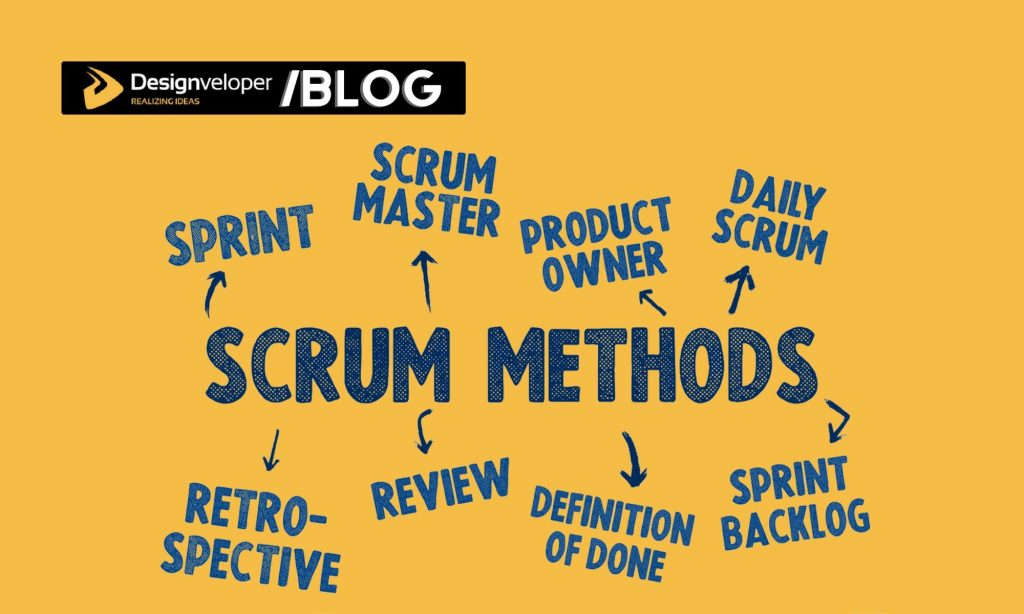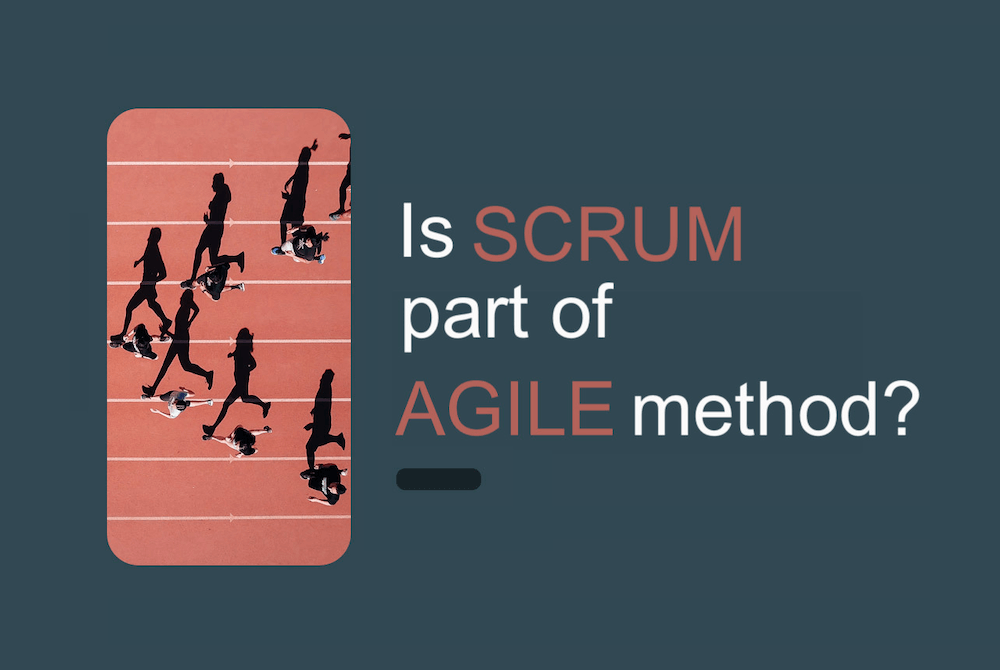Agile and Scrum are two familiar names when it comes to software project management methods. Today, these lightweight methods are no longer limited to IT segments but rather more adopted in other business functions. So do you know the key differences between Agile vs Scrum Methodology? If you want to improve your knowledge of these approaches, this Designveloper article is the right place for you.
What Is Agile?
The Agile methodology is a philosophy that instructs companies to conduct projects in small increments. When working in Agile settings, teams break whole projects down into iterative chunks or tasks and conduct them within short timelines.
Unlike traditional methods which aim at having a one-time launch, the Agile analog allows companies to produce continuous releases. This lightweight approach accordingly boosts the speed of feedback and adaptation to new market conditions.
Also, it promotes the involvement of not only developers but also business people and other stakeholders in the process. Accordingly, this mitigates misunderstandings about client requirements and ensures the high quality of final outcomes.
When to Use Agile
In short, Agile is best suitable for companies that often confront new situations and foresee changes. So, it’s common in ongoing projects or ones that don’t require detailed plans and documentation.
What Is Scrum?

Scrum is a set of principles and tools used to provide customers with business values within the shortest timescales, commonly called “sprints”.
Briefly, this framework helps companies handle unknown or able-to-change requests. Accordingly, releasing parts of software depends on market changes to meet immediate needs.
In the Scrum setting, one sprint often lasts from one to four weeks, typically two weeks. Accordingly, a whole project is divided into smaller builds that are continuously conducted over a series of sprints. For this reason, a Scrum team is relatively small, around ten people. Particularly, they include the product owner, a Scrum Master, and those in charge of development tasks. These members constantly communicate during such important events as Sprint Planning or Daily Standups to track work progress and fast adapt to changes.
When to Use Scrum
Scrum teams are set up to conduct projects that are susceptible to changes. So if requirements are fixed or clearly defined right at the beginning of the project, Scrum is not a good option. Instead, your company should consider traditional methods such as Waterfall or PRINCE2.
FURTHER READING: |
1. How to apply Scrum to your Software Development Company |
2. The Importance of Scrum to a Software Product |
SCRUM methodology topicAre There Any Differences Between Agile and Scrum Methodology?
Here are some noticeable differences between Agile vs Scrum methodology:
1. Concept

Agile is a philosophy of managing projects in a state of flux. In addition, it doesn’t define certain processes, events, or tools. Meanwhile, Scrum is a framework that teams follow to conduct agile projects.
2. Core Values
Looking at the table below, you will see how Agile’s core values differ from that of Scrum:
| Agile | Scrum |
| 1. Individuals and interactions over processes and tools 2. Working software over comprehensive documentation 3. Customer collaboration over contract negotiation 4. Responding to change over following a plan. | 1. Courage: Team members have the courage to do the right thing and solve challenging problems 2. Focus: Everyone focuses on sprint increments and the team’s goals 3. Commitment: Members commit themselves to achieve the team’s goals 4. Respect: Members show respect for each other and strive to become independent, capable people 5. Openness: All members and stakeholders are open about requirements, work, and difficulties over the sprint. |
Accordingly, Agile focuses on interactions between members and collaboration with end-users. Hence Agile teams are encouraged to produce frequent releases to get quick feedback from customers.
Meanwhile, Scrum teams pay more attention to workflow, ultimate objectives, and adaptation to changes. Thereby, they focus on rules, artifacts (i.e. Product Backlog), and events (i.e. Sprint Planning or Retrospective) to help them do so. For this reason, Scrum is considered more restrictive than Agile.
3. Team Members
A Scrum team typically includes a product owner, a Scrum Master, and developers. Which, a Scrum master acts as a servant leader who helps everyone understand input parameters, duties, and workflows. A Scrum team is self-organizing and has no leaders accordingly.
Meanwhile, various Agile teams now have project managers plan, organize, execute and monitor the work. They function as team leaders who ensure all members understand requirements and follow guidelines. Such teams either follow other Agile frameworks (e.g. Kanban or Spotify) or have been experiencing Agile transition enterprise-wide.
Facts Behind Scrum: Is Scrum Truly Part of Agile Methodology?

In short, based on the given concepts, you may find various similarities between Agile vs Scrum methodology:
- Have short-term delivery cycles;
- Facilitate quick responses to changes;
- Emphasize communications and interpersonal cooperation.

Coming back to the history of these two methods, Scrum was originally developed in the early 1990s by Ken Schwaber and Jeff Sutherland. Also, it acts as a lightweight process that helps minimize production costs and maximize effective development time.
Until 2001, representatives in “light” methodologies (including Scrum, XP, and more) gathered and coined the umbrella term “AGILE” to refer to those approaches. So, in superficial terms of definition, Scrum can be seen as an Agile framework.
But reality seemingly doesn’t support that statement. “Scrum is not agile,” said Steven A. Lowe, a Product Technology Manager at Google. Dennis Weyland, a software engineer at Google, also shared the same point on his private blog.
Looking at Agile values, we see they primarily concentrate on individuals and interactions over processes and tools. In comparison, the Scrum Guide highlights how roles, artifacts, and events are bound together to build expected deliverables for the market. Besides, its values mainly focus on workflow and goals. Particularly, members’ commitments to Scrum rules help shape their relationships and communications.
Final Words
Moreover, Agility is defined as the ability to “move quickly and easily”. But one problem of such lightweight approaches as Scrum is that teams find numerous projects hard to be conducted fast or with ease. Therefore, the Agile Manifesto was introduced to give high-level instructions to help “lightweight” teams avoid its potential pitfalls.
So given the nature of Agile vs. Scrum methodology, the former is understood as a philosophy that supports Scrum teams to work more productively and deliver values faster in changing complex environments.









